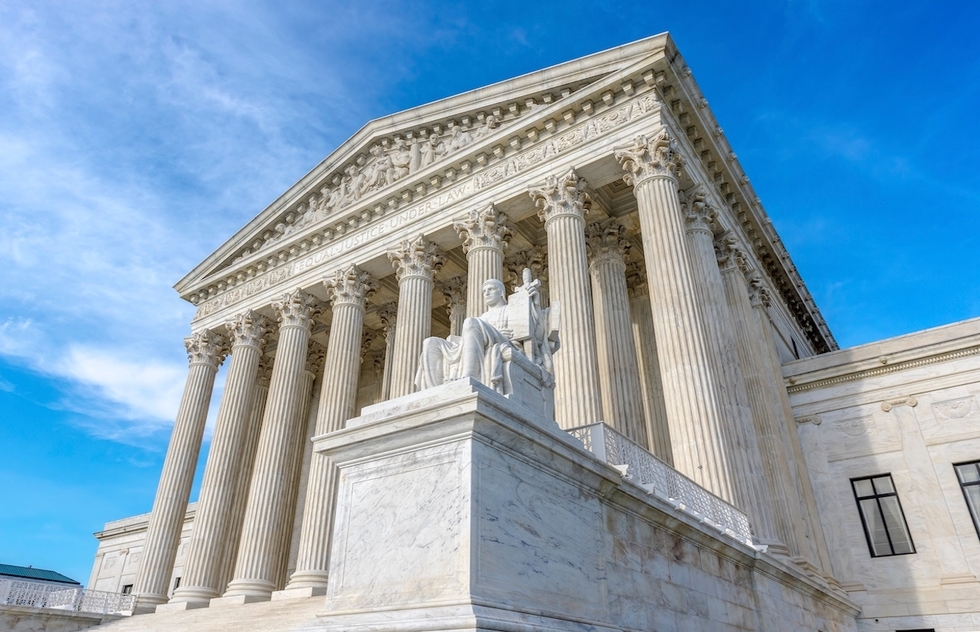On many days, the Supreme Court is the most exciting place to be in town, despite the building being closed to the public when the Court is in session (except for a limited number of seats, more on that below).
Beginning on the first Monday in October, the nine justices hear cases, later to render opinions that can dramatically affect every American. Visitors may attend these proceedings, in which lawyers representing opposing sides attempt to make a convincing case for their clients, even as the justices interrupt repeatedly and question them sharply to clarify the constitutional principles at stake. It’s a grand show, fast-paced, sometimes heated, and always full of weighty import (the justices hear only about 80 of the most vital of the 7,000 to 8,000 or so petitions filed with the Court every year). The Court’s rulings are final, reversible only by an Act of Congress. And you, the visitor, get a close-up seat…if you’re lucky (see below for info on getting in).
But even when the court isn’t in session, touring the building is a worthwhile experience. During those periods, docents offer 30-minute lectures inside the Supreme Court chamber to introduce visitors of all ages to the Court’s judicial functions, the building’s history, and the architecture of the courtroom. Lectures take place at 10:30am, 12:30pm, and 1:30pm on weekdays when the Court is not in session. They are free and available on a first come, first served basis, so it’s recommended that you line up in the Great Hall on the first floor at least 15 minutes before your desired lecture. Check the calendar on the website to see the latest information. You can also tour the building on your own and check out the ground floor exhibits, cafeteria, and gift shop Monday to Friday from 9am–3pm.
Getting in to see a case being argued: Right now, only a handful of people are being allowed in to see arguments, unfortunately. Check the court's website for current info. The following text has to do with the normal operations of the court, which are currently suspended. Starting the first Monday in October and continuing through late April, the Court “sits” for 2 weeks out of every month to hear two 1-hour arguments each day Monday through Wednesday, from 10am to noon, with occasional afternoon sessions scheduled as necessary starting at 1pm. You can find out the specific dates, names of arguments, and case descriptions on the Court’s website and over the phone (see below).
Plan on arriving at the Supreme Court at least 90 minutes in advance of a scheduled argument during the fall and winter, and as early as 3 hours ahead in March and April, when students from schools on spring break lengthen the line. (Dress warmly; the stone plaza is exposed and can be witheringly cold.) Controversial cases also attract crowds; if you’re not sure whether a particular case has created a stir, call the Court info line to reach someone who can tell you. The Court allots only about 150 first-come, first-served seats to the public, but that number fluctuates, depending on the number of seats that have been reserved by the lawyers arguing the case, law clerks, special guests, and the press. The Court police officers direct you into one line initially; when the doors finally open, you form a second line if you want to attend only 3 to 5 minutes of the argument. Seating begins at 9:30am for those attending the full argument and at 10am for those who want to catch just a few minutes.
If you attend an oral argument, you may find yourself present as well for the release of a Supreme Court opinion, since the justices precede the hearing of new oral arguments with the announcement of their opinions on previously heard arguments, if any opinions are ready. If you’re visiting the Court in May or June, you won’t be able to attend an argument, but you might still see the justices in action, delivering an opinion, during a 10am 15-minute session in the courtroom. To attend one of these sessions, you must wait in line on the plaza, following the same procedure outlined above.
Leave cameras and recording devices at your hotel—they’re not allowed in the courtroom. Small children and infants are allowed but not recommended. Note: Security procedures require you to leave all your belongings—outerwear, purses, books, sunglasses, cell phones, and so on—in a cloak room with complimentary lockers.






 About our rating system
About our rating system


